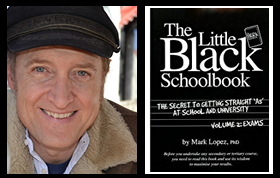Dr Mark’s The Meaning in a Nutshell
Toni Jordan, Nine Days (2012)
Toni Jordan’s Nine Days (2012) is a postmodern novel celebrating the progressive social changes experienced in Melbourne, Australia between 1938 and 2006. This is especially the case regarding socio-economic and cultural changes related to feminism, such as the eventual provision of safe legal abortions, greater acceptance of expressions of female sexuality without fear of being shamed for not being ‘respectable’, the expansion of educational and employment or opportunities for women, and the reconceptualisation of the traditional family and the gender roles within the family. Women were depicted as oppressed before they were liberated. This oppression could even cost lives, as was the case of Connie who was a casualty of a backyard abortion in 1940. The novel also presents progressive messages related to pacifism, such as the injustice of intimidating young men to enlist and the way war arbitrarily costs lives. The novel also deals extensively with the negative impact of class and inequality on economic opportunity and the humiliating impact of snobbery inflicted on the poor. These concerns intersect with the prevalence and then the fading away of unjust and unnecessary sectarian prejudices (involving Protestants and Catholics). The novel also deals with the widespread existence and eventual decline of casual racism to be gradually displaced by the emergence of multiculturalism and greater engagement with Asia. The novel also deals with the rise of an environmental consciousness, and presents the emergence of the hippy counter-culture of the 1960s and 1970s as a source of liberation that is not sufficiently appreciated by many others, especially the younger generation of the twenty-first century.
The novel is not only postmodern in its overt interest in social divisions along the lines of race, ethnicity, class and gender, as well as in its appreciation of feminism, Marxism and Freudian psychoanalysis; it is also postmodern in its unconventional non-linear structure used to tell the story of several generations of a working class family that mostly lived in inner-city Richmond. Each of the nine chapters is told from a different character’s perspective and covers different important days or encapsulates different eras. The readers are invited to compare and contrast the chapters that cover the late 1930s and early to mid-1940s with the chapters that cover 1990 and the early twenty-first century in order to fully appreciate the progressive socio-economic and cultural changes celebrated in the novel. The chapters are not chronological, but deliberately juxtaposed to generate insightful comparisons and contrasts to reveal the shortcomings of the past compared to more progressive and liberated recent times. This postmodern perspective also allows the novelist to convey the postmodern view that truth is subjective and relative, and dependent on the perspective of the individual telling the story. Meanwhile, the novel also explores more traditional territory of interest to novelists, such as the contrast between what is thought and said. The first-person narratives allow for the novel to contrast private thoughts and feelings with public actions and utterances to show an appreciation of these intricacies of human behaviour.
The novel laments the underappreciation of hippies by many in the wider society, especially by the generations that followed them but do not realise how their lives have benefitted from the historical influences that the hippy movement had on Australian society. Hippies are detailed in terms of their multifaceted interests and gently mocked in the novel by some characters to reflect the underappreciation of their contribution to the kinds of political and cultural values that the author appreciates, including: feminism, pacifism, environmentalism and a Marxist attitude to class.
In addition, with the novel being family saga it places sentimental importance on the value of family. Family is shown to support individuals through the troubles and challenges of life. Indeed, these challenges may be insurmountable without the support of family. Several family members are shown to sacrifice their hopes and dreams so other family members can survive or thrive. The novel celebrates family connections and family history as overriding other concerns, like friendships. And it does so while celebrating the changing structure of family life and the evolution of the family away from the traditional nuclear family consisting of the male breadwinner, the female homemaker and nurturer, and the children, to more unorthodox, fluid and adaptable family structures. This can include a home with two older sisters sharing the role of mother with no male breadwinner in the household. Furthermore, this is presented positively as an evolved feminist-influenced culture where the once damming stigma of being an unmarried mother has disappeared.
The novel also presents a geographical, sociological and historical survey of a changing suburb over time. Inner-city Richmond is graphically described as a rough working-class suburb of the 1940s that was divided on class and sectarian lines (between the middle class and the working class and between Protestants and Catholics) and plagued by street gangs, poverty and unemployment, to later become a gentrified multicultural suburb of the 1990s and beyond that features young people in bohemian share houses, Italian pizza parlours and a thriving Asian/Vietnamese district.
Student resources by Dr Mark Lopez
© Mark Lopez 2021 All RIGHTS RESERVED
The purpose of the concise notes of Dr Mark’s The Meaning in a Nutshell is to provide much needed help to students seeking to unlock the meaning of the texts with which they have to deal. (More elaborate notes are provided in lessons as part of my private tutoring business.)
Subject: Nine Days meaning, Nine Days themes, Nine Days analysis, Nine Days notes
